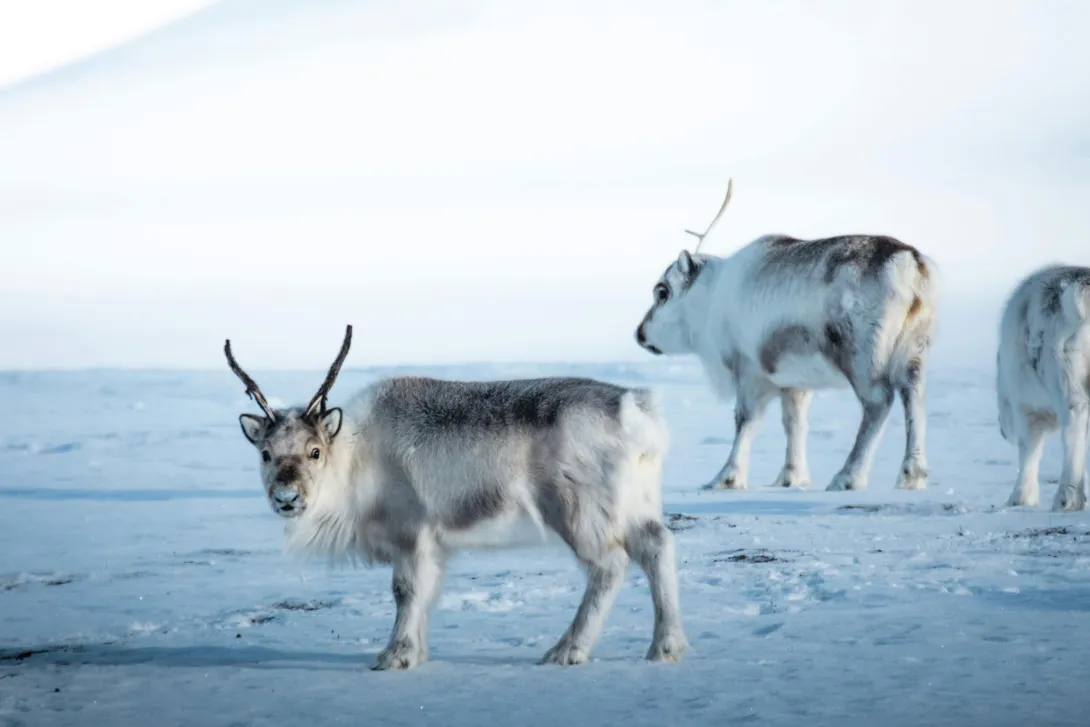
Lehigh researchers use remote sensing data to reveal how melting snow signals caribou to begin their spring journey
When Joan Ramage, associate professor of earth and environmental sciences, began working with Mariah Matias ’20, G’23 on her master’s degree thesis, the pair never guessed they would discover a key to caribou migration behavior more than 2,000 miles away in Canada’s northwest territories.
Every spring female caribou very suddenly begin to move from forests in northern Canada to their calving grounds in the Arctic tundra hundreds of miles away to have their young. Scientists are interested in understanding more about how the animals know when to start migrating. Utilizing data from remote sensing equipment that included GPS and microwave technology, Ramage, Matias, and their colleagues identified a correlation between the start of the migration and snowmelt. The research was presented at the American Geophysical Union annual meeting in December 2024. The findings also were published in the journal Remote Sensing.
Ramage and Matias’s research indicates that changes in snow texture and consistency when it begins to melt appear to be a cue for the move to calving grounds. Their discovery is perhaps even more fascinating because they were able to identify it without ever setting foot in the northwest territories, using remote sensing data tracked by the Canadian and United States governments.
Read the full story on the College of Arts and Sciences News
Spotlight Recipient

Joan Ramage
Associate Professor
